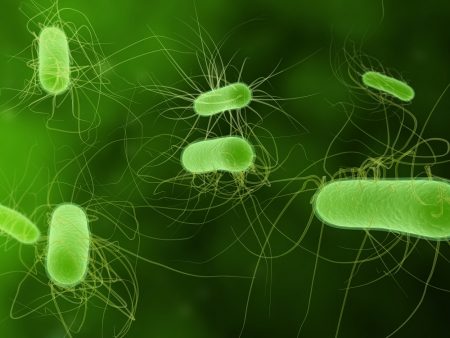January 18, 2017 – Bio-neural gel packs were featured in a number of Star Trek episodes and movies. Back in March of last year I wrote about what was then current research on the subject and described the advantages biological computing would have over the technologies we use today. The key one is energy use. A biological computer would require only 1% of the energy needed to operate an electronic transistor.
In an article published yesterday in Nature Communications, a team of researchers at the Institute for Bioscience and Biotechnology Research, University of Maryland, describe “the utility of using biologically relevant redox molecules in translating electronic signals to changes in engineered bacterial gene expression.”
What does that mean?
That they can genetically induce bacteria to communicate using electronic controls to influence behaviour. This is biomolecular information transfer and is bringing the science fiction future close to a 21st century reality. Not only does it demonstrate the potential to create bio-neural gel packs that can be integrated with silicon or quantum computing devices, it also means we are discovering a way to communicate with the very cells within our bodies and developing tools to potentially manipulate them. The latter has significant implications for curing diseases.
Why redox molecules?
Also known as redox signaling molecules, they are manipulated by the mitochondria within our cells. When mitochondria are healthy and functioning properly redox molecules get produced. They come in two forms, one creates oxidation and the other reduction. The oxidation removes electrons. The reduction delivers electrons. Sounds like an electronic circuit in the making.
The research team at University of Maryland used E. coli to demonstrate the potential of this discovery. They submerged an electrode into a liquid containing E.coli. Applying a positive charge triggered redox molecules and oxidation. The genetic mechanism for the reaction was then isolated so that the researchers could then engineer the bacteria to automatically produce a consistent response to an electronic stimuli. When exposed to electrical input these re-engineered E. coli could be induced to swim or flouresce. The bacteria was also induced to create a signal molecule to transmit to neighbouring E. coli which then responded similarly to electronic inputs. This demonstrated the effectiveness of the process for inducing a group response.
With a little genetic rewiring this research demonstrates that bacteria can be used to both collect and deliver information. It can communicate with diseased and cancerous cells. The bacteria can deliver a message in the form of a drug or molecular kill switch. And maybe very soon E. coli and other bacteria can form those biological circuits science fiction has described.
















